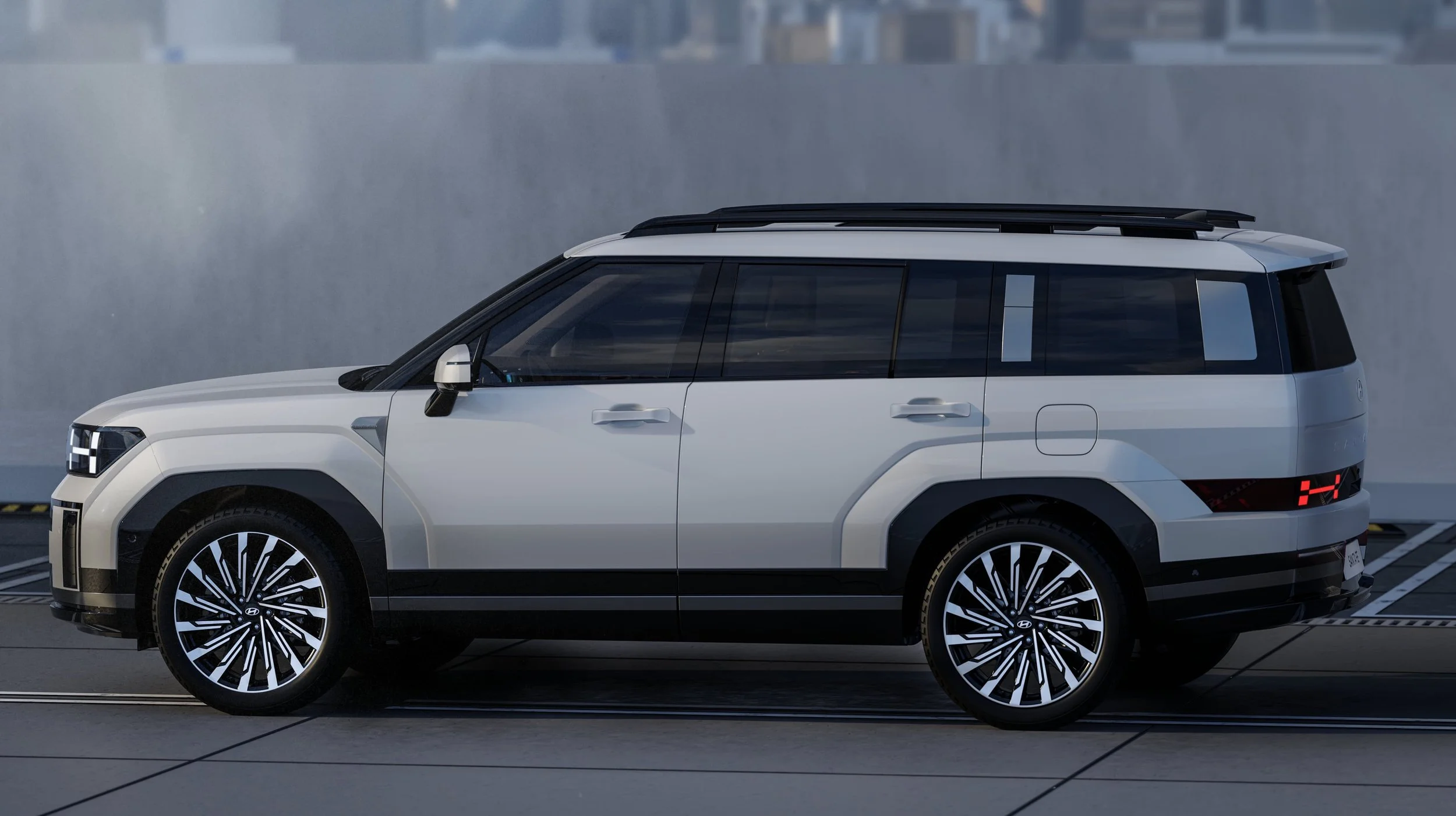Cleaner living costs Santa Fe towing edge
/Dropping diesel means less haul in the family; big gun likely topped by Tucson, Palisade.
BIG changes with a soon-launching Hyundai sports utility that might test its standing with farmers yet also lift the type’s clean air cred for could come to the fore with a preview this week.
Hyundai New Zealand has a next-generation Santa Fe for display during the February 29-March 5 New Zealand Golf Open at swanky Millbrook resort near Queenstown.
The car is a very early production example brought across from Australia, where the make has a factory presence.
Any expense NZ’s privately-owned sales operation has copped in bringing it here is of small consequence.
The nameplate is of primary importance, having achieved more than 25,000 NZ sales since it arrived in 2000.
Much of that success has been from Santa Fe having won acceptance with the rural community, not just farmers but also as a fleet vehicle for involved industries.
That’s why Santa Fe has a cameo in the opening sequence for Country Calendar, New Zealand’s longest-running television programme, which Hyundai NZ sponsors.
The make’s association with the consistently high-rating show, which started a new season last night, tied to when Hyundai launched the seven-seater sports utility with a diesel engine - a comfortable fit for country types but less popular in city use.
Nonetheless compression ignition thrift and trailer-towing grunt have built the car’s profile as a big-family regional touring powerhouse, to point where it ultimately captured almost 70 percent of volume.
However, the 14-year reign of that 2.2-litre turbocharged unit curtails with the fifth generation Santa Fe.
The incoming new type is a completely fresh car that is bigger, bolder, safer and more technologically advanced than before.
But it also drops diesel, instead shifting emphasis back to petrol and conceivably bringing to the fore here an electric-assisted 1.6-litre hybrid petrol drivetrain from the current car.
The hybrid is a give and take provision; it helps lift the type’s environmental standing - with impressively lower CO2 counts and improved optimal economy - but also significantly degrades the towing rating.
Whereas the 148kW and 440Nm diesel is rated to haul 2500 kilograms braked - not enough to put it in the big leagues, but handy nonetheless - dealers have been advised the new hybrid will draw the line at the same limit imposed on the current version, a potentially less useful 1650kg.
That’s a big downgrade, lineball with the next-size-down Tucson, which is rated from 1650kg to 1900kg depending on the derivative, and only slightly ahead of the Kona.
The new limit means the heaviest duty hauler behind the slanted-H badge becomes the largest-scale Palisade, which while built on the current Santa Fe platform is limited to 2200kg.
The powertrain programme being four cylinder specific from now on also spells the end for the 3.5-litre V6 that ran for a time in the current and previous Santa Fe here.
The 2.5-litre turbo four-cylinder that pumps the six looks stronger on paper, with 207kW and 422Nm against 200kW and 33Nm.
Hyundai NZ has yet to spell out the 2.5’s role here. In prepared comment about the Queenstown car, Hyundai NZ’s new boss, Scott Kelsey, was specific about the hybrid, which in current form makes 169kW and 350Nm.
The unit teams with a 44.2kW electric motor and 1.49kWh lithium-ion polymer battery for fuel efficiency of 6.5 to 7.6 litres per 100km, according to data from South Korea.
The 2.5-litre is cited 9.3 to 10.5L/100km and the claim for the diesel has been 7.1 to 7.8L.
Emissions are improved; the hybrid in current context emits 145 grams per kilometre on the WLTP scale, which though nowhere near as good as the PHEV’s optimal (WLTP weighted, combined) condition 37g/km, is ahead of the 2.2-litre, which at best delivers 160g/km. The V6 was the dirty one, with 244g/km.
In overseas markets, there will be a 1.6-litre petrol-electric plug-in hybrid – with a six-speed auto and 118kW/265Nm outputs from the engine alone – and a non-turbo 2.5-litre petrol engine with 143kW/246Nm and a regular eight-speed auto.
The new 2.5 is matched with an eight-speed dual-clutch automatic transmission, replacing the outgoing eight-speed torque-converter auto. The 1.6-litre hybrid carries over a six-speed automatic transmission. Presently all Sant Fe choices here are all-wheel-drive, but it has also provisioned the car in front-drive.
Available advanced safety features include autonomous emergency braking, lane-centring assist, adaptive cruise control with stop and go, assisted lane changes on highways (in some markets), driver attention warning, rear cross-traffic alert, front and rear parking sensors, 360-degree and rear-view cameras, Remote Smart Parking Assist, and door exit assist.
The new Santa Fe is tangibly larger than the vehicle it replaces; at 4830mm long, 1720-1780mm tall (depending on model) and riding on a 2815mm wheelbase it is 45mm longer overall, 20mm taller, 50mm longer between the wheels. Only width of 1900mm is consistent.
Highlights of the design include distinctive H-shaped LED headlight and tail-light designs, 21-inch wheels on top-of-the-range models, prominent wheel arches, and blacked-out window pillars for a 'floating roof' look.
Inside, a pair of 12.3-inch screens – one infotainment touchscreen, and one instrument display – have been merged into a curved panel across much of the dashboard, running Hyundai's latest software with over-the-air updates, Apple CarPlay and Android Auto.
The steering wheel and climate-control panel – with two large dials flanking a 6.6-inch colour touchscreen – are reminiscent of those used by Range Rover.



















